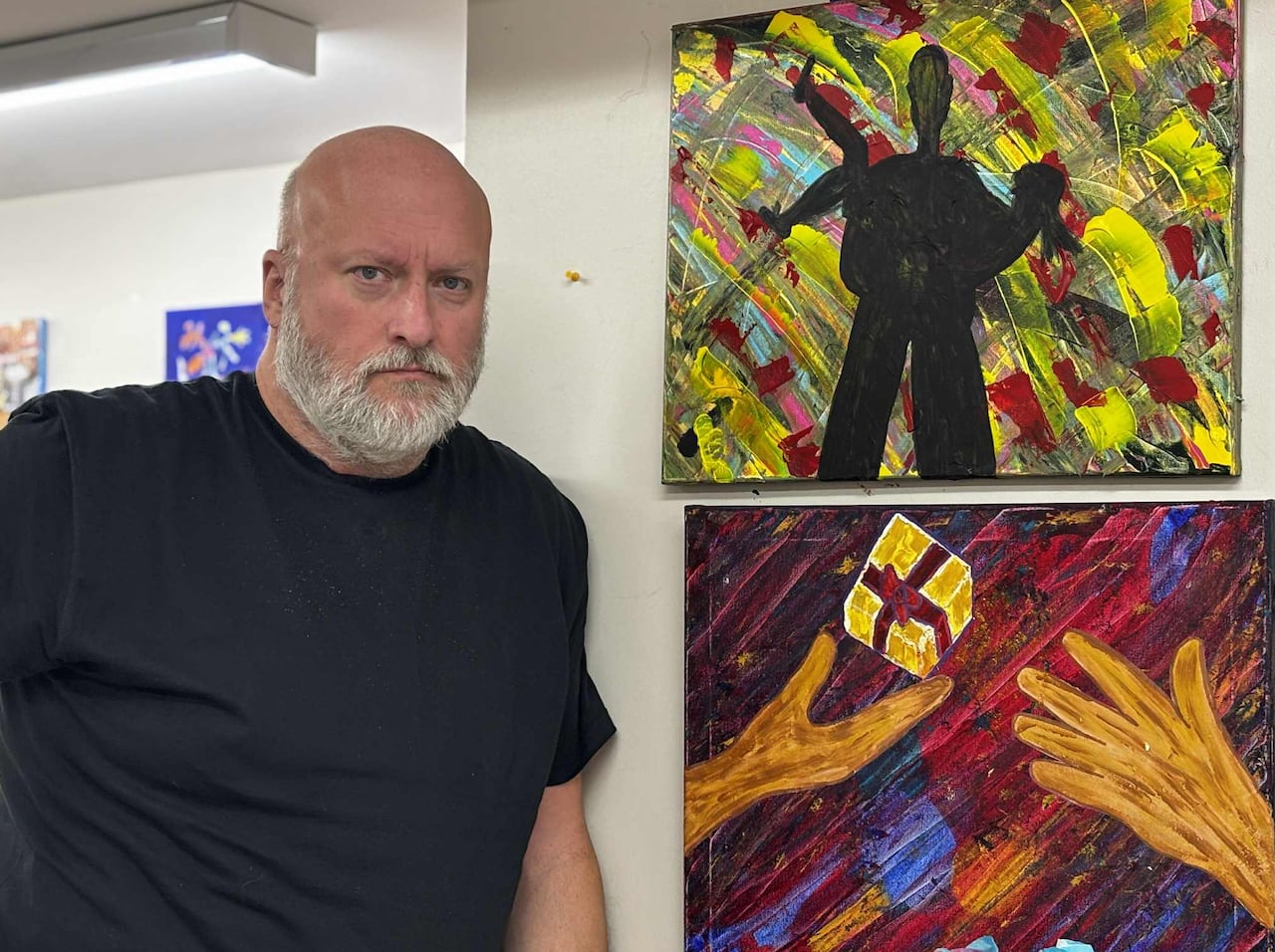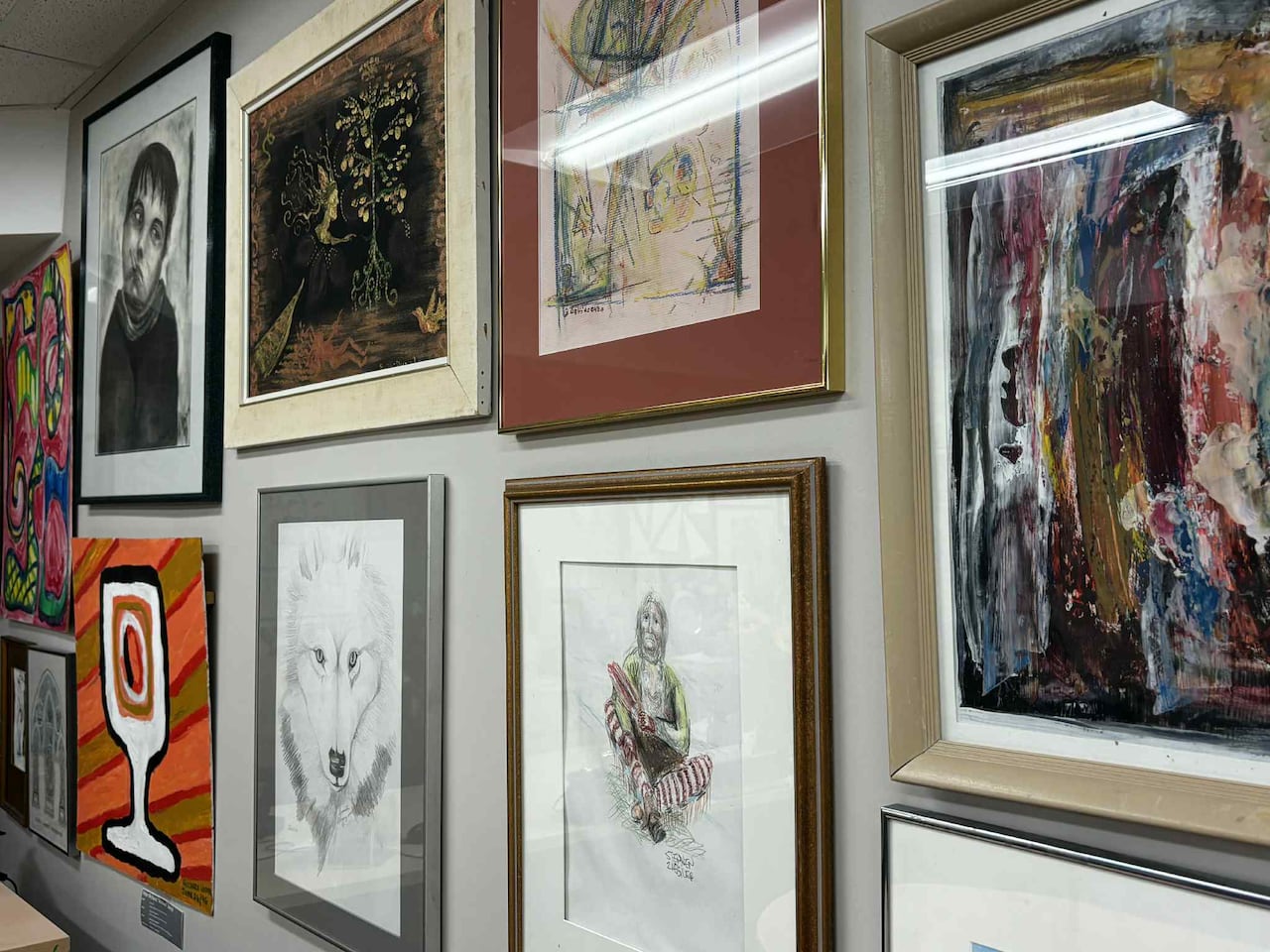Listen to this article
Estimated 5 minutes
The audio version of this article is generated by text-to-speech, a technology based on artificial intelligence.
After more than three decades helping Londoners facing mental health challenges explore their emotions through art, volunteers at a downtown studio say they need more support to keep the doors open.
City Art Centre is a volunteer-run, non-profit art studio for adults struggling with their mental health. Since the studio opened in 1992, it has offered free space and art supplies for Londoners in need.
“It gives people hope. It gives them a place,” said City Art Centre art co-ordinator Gerry Arnold. “I’ve seen so many cases where people have come out of their shells. I’m one of them.”
The City Art Centre studio is in the basement of the Innovation Works building at 201 King Street. The walls of the studio tell the story of the participants who have come through City Art Centre over the years, with a colourful mix of paintings, drawings and multi-media projects on display.
 City Art Centre volunteer coordinator Carrie Vanderheyden stands next to some of her painted clocks, which are on display at the studio this month. Vanderheyden first visited the studio more than a year ago to help with her own schizoaffective disorder, but continues volunteering to give back. (Kendra Seguin/CBC News)
City Art Centre volunteer coordinator Carrie Vanderheyden stands next to some of her painted clocks, which are on display at the studio this month. Vanderheyden first visited the studio more than a year ago to help with her own schizoaffective disorder, but continues volunteering to give back. (Kendra Seguin/CBC News)
Participants have access to free paints, coloured pencils, pastels and craft supplies, or can bring in their own materials to work on a project of their choice.
Volunteer coordinator Carrie Vanderheyden has helped operate the centre for about a year, but attended as a participant before that to work through her schizoaffective disorder, she said.
“I got started because I was working on my recovery with mental health. I heard about this place. I didn’t even know I could do art, but I tried doing art,” she said. “It’s just turned into a lifestyle now. Every day I’m doing some kind of art and it makes me feel great.”
Arnold, who was a participant for three years before becoming a coordinator for five years, said he uses art to help explore his post-traumatic stress disorders, and has even brought his artwork to counseling sessions to talk about the physical abuse he survived as a child.
 Gerry Arnold is the art coordinator at City Art Centre in downtown London, Ont. He continues to create paintings to help with his own post-traumatic stress disorders while helping run the centre two days a week. (Kendra Seguin/CBC News)
Gerry Arnold is the art coordinator at City Art Centre in downtown London, Ont. He continues to create paintings to help with his own post-traumatic stress disorders while helping run the centre two days a week. (Kendra Seguin/CBC News)
“I was not able to talk about it for years, but I talked about the painting. I was really talking about the incident and I was really talking about the hurt. That painting gave me the ability to speak what I couldn’t say for years,” Arnold said.
“Art is a form of expression. I use it myself as my heartbeat. I consider art my first language,” he said.
Recovery includes socialization
Although City Art Centre is specifically for adults who struggle with mental health, the studio has a drop-in model where no references or proof are needed.
“Just that extra step of going and getting a note from a doctor can be devastating for some people,” Arnold explained. “We’re trying to help, not trying to add to the things they have to deal with.”
Still, Arnold said the studio is not for everybody.
“Some people need individual care and we do not provide that here. Some people need no structure but we do have structure here. Finding a place that is best for the individual is paramount,” he said.
 A photo album dated 1993 shows the original City Art Centre. Back then, the centre had a larger space, which included an art studio, writer’s corner and social room. (Kendra Seguin/CBC News)
A photo album dated 1993 shows the original City Art Centre. Back then, the centre had a larger space, which included an art studio, writer’s corner and social room. (Kendra Seguin/CBC News)
While there are some rules around subject matter, most projects at the City Art Centre are self-directed, and participants can choose to work alone at a desk or mingle with others at a larger studio table.
Vanderheyden said visiting the studio also helps her mental health by giving her a social routine.
“It gives me a little structure to my day, so I have a reason to go somewhere and get out of the house,” she said. “I get a chance to talk to other people who also struggle with mental health, so we can use the same language with each other.”
“It’s a place where you feel like you belong. It’s a place to go, and we don’t always have places to go,” Vanderheyden added.
Search for more volunteers, art supplies
The studio relies on community donations to keep the lights on and purchase art supplies, Arnold said, but finances are getting tight.
“We’re still alive. We don’t know how long we can stay afloat. We’ve had some financial problems in the last little while and we could really use some art supplies for next year,” he said, adding that the studio also accepts donations of used art supplies.
 Artwork lines the walls of the City Art Centre studio in downtown London, Ont. All of the pieces on the studio’s permanent gallery wall are by artists who have passed through the building over the years. (Kendra Seguin/CBC News)
Artwork lines the walls of the City Art Centre studio in downtown London, Ont. All of the pieces on the studio’s permanent gallery wall are by artists who have passed through the building over the years. (Kendra Seguin/CBC News)
Arnold and Vanderheyden are currently the only two coordinators at the studio, each volunteering two days a week for a small honorarium, but they are seeking more people to join their team.
Vanderheyden said it’s been rewarding to be a volunteer, giving back to the organization that gave so much to her.
“It’s a pretty basic volunteer role … but you really just want to be a friendly face so that people can feel welcome and invited to come,” she said.
